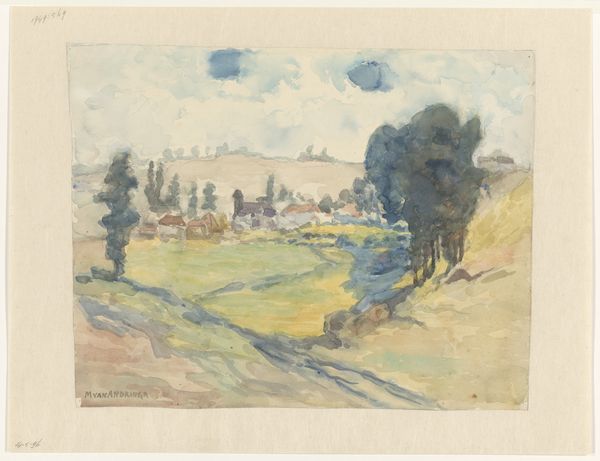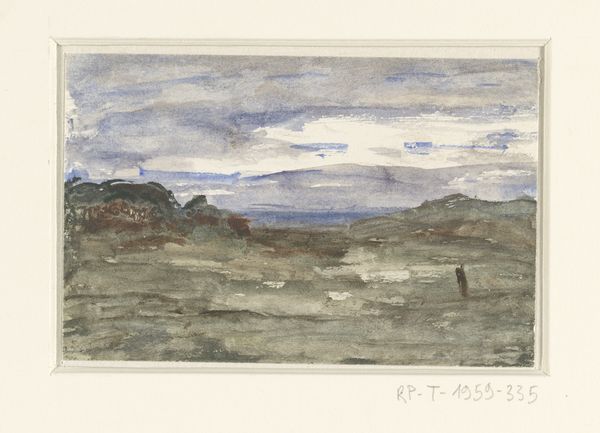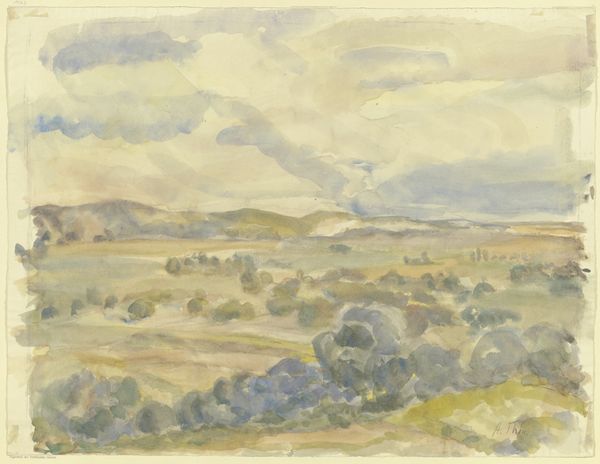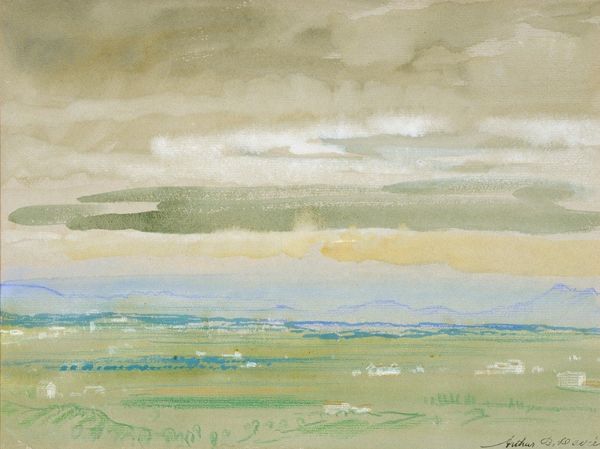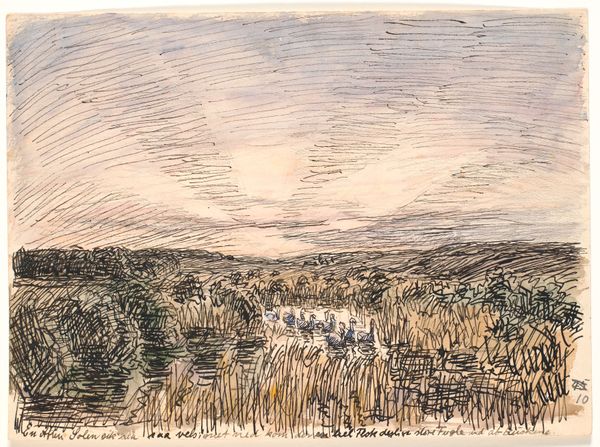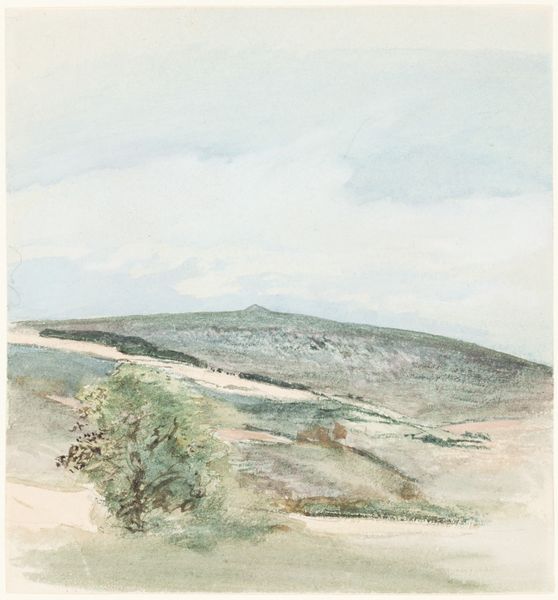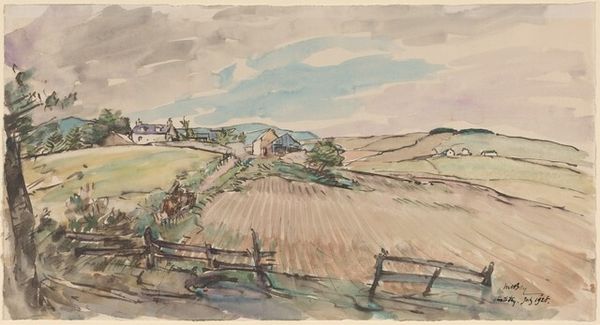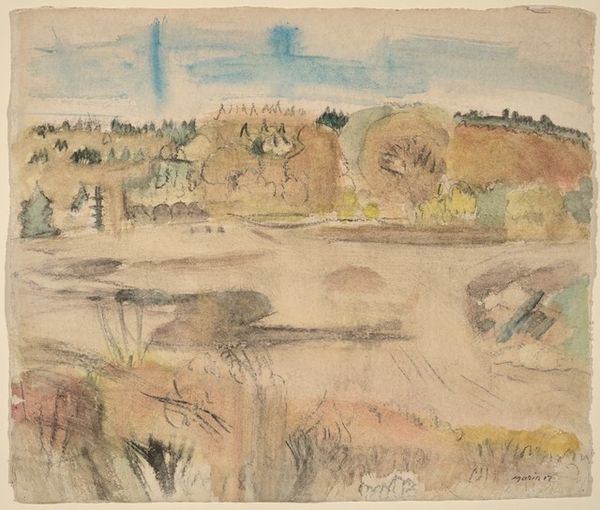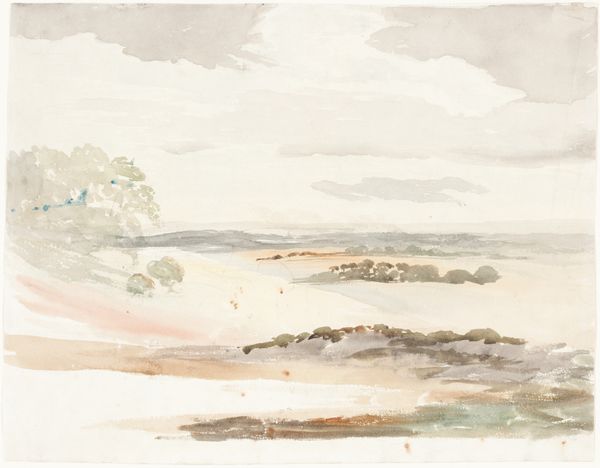
Dimensions: height 300 mm, width 443 mm
Copyright: Rijks Museum: Open Domain
Curator: This watercolor, entitled "Weg door landschap," or "Road through Landscape," is attributed to Wilhelmus Johannes Steenhoff. It's difficult to pinpoint the exact date, as the period listed is quite broad: 1873 to 1932. You can find it here at the Rijksmuseum. Editor: It’s immediately calming, almost melancholic. The soft washes of blue and brown suggest a quiet, overcast day. There’s something very transient about the medium, watercolor, that suits the scene, as though the view might dissipate any moment. Curator: Absolutely. Watercolor as a medium gained prominence with the rise of plein-air painting in the late 19th century, facilitating quick impressions of nature. Steenhoff likely situated himself outdoors, capturing the Dutch landscape directly. Editor: Look at the road itself. It’s not just a path, but a riverbed of memory and suggestion. The blurred edges invite us to project our own journeys and emotional landscapes onto it. The blues interspersed with the browns make the path resemble flowing water almost more than earth. Curator: It's interesting that you pick up on that. Steenhoff, although not a central figure, contributed to the Impressionistic movement in the Netherlands. These artists moved away from traditional landscape depictions towards impressions and the symbolism inherent in a personal rendering of natural surroundings. Editor: Steenhoff captures an ephemeral moment—the effect of light, the quality of air, all conveyed through a loose, almost dreamlike style. Curator: I think we should remember too that as with many works created during the impressionistic movement this watercolor could be politically motivated, even if only implicitly. It highlights the common landscapes away from bustling cities, in the fields of the common worker during this time period of increased industrial output. Editor: Perhaps this invites consideration as to why those every day laborers and places were left behind when paintings began to focus so rigidly on the city. The sky carries a huge weight. The deep blues bearing down contrast with a small area of pale pink or maybe lavender sky above the distant fields. The heaviness seems to press on everything beneath it, landscape, road and traveler alike. Curator: Looking at it through the lens of history, you can certainly feel those tensions. It reminds me how important it is to see art in the context of what's happening in the wider world, as part of our social and political history. Editor: And how deeply embedded in that history and our experience is the resonance of symbols and the cultural memory images evoke.
Comments
No comments
Be the first to comment and join the conversation on the ultimate creative platform.
